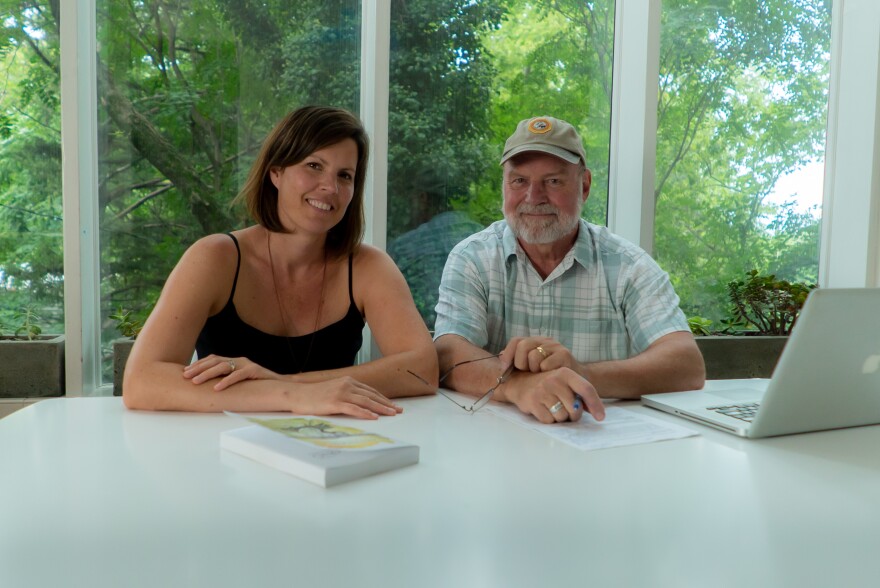It's tempting to say that for nearly 40 years, Lawrence bankruptcy attorney John Hooge has led a bit of a double life. He built a successful law career and raised a family, but there was also the art and the writing — and the trees.
This month, Hooge (pronounced "hoagie") releases the first in a self-published, four-part series of illustrated novels called Leafensong, broken down into Leafensong: Tellings one through four.
The books were 35 years in the making.
"We thought he was nuts," his daughter, Jenea Havener, says of hearing about her dad's hobby as she grew up. But now, as an adult and his acting publicist, her thoughts have changed to, "Wow, this is a legit idea."

Leafensong is a world Hooge built around what he sees as the interconnectedness of nature. That world fell out of his interest in trees, which he began drawing when he was 30. Since then, he’s studied the animals of wooded areas, and the trees themselves, so intently that they took on their own lives.
"These trees are more than just trees, these are characters," Hooge says.
The protagonists of his books are two squirrel brothers, Kooper and Boggs, who, naturally, live in a tree. Slowly, over the course of the series, the trees themselves are revealed as characters, Hooge says.
"I've always felt like there was much more to trees than people realize. There have been studies in the last 10 years about just how the trees communicate," Hooge says. "It's echoed what I’ve thought and imagined for so many years."
The action begins in the year 3072 AA (that's After Apocalypse). Humankind is gone, but animals have gained intelligence and are cultivating rich cross-species relationships and fighting complex turf wars.
Havener is not normally a fan of fantasy. But, she says, "He's really good at drawing out a character that makes you go, 'Oh, what's going to happen to this squirrel?'"

Boggs, for example, is blinded at birth by a lightening strike that kills his mother. In Hooge's fictionalized forest, blind squirrels are evil, so the Leafensong council proclaims that Boggs should be put to death.
A grandmother squirrel intervenes and saves him.
Havener describes the grandmother as a healer who frequently urges other creatures to "seek the balance."
That echos what she's always heard from her father. No one character stands alone; the trees, animals and fungus of the forest floor are all in conversation.
"It's about environmental stuff, it's about being connected to everything around you," Havener explains.
Father and daughter alike say they've been thrilled to see years' worth of ideas and drawings finally culminate in a publication. The story is novel-length and includes 31 illustrations. The two think it's appropriate material for older children through adults.
While he edits and revises the next three books about Leafensong, Hooge continues to practice law and has no plans to retire soon. But, perhaps, as the grandmother squirrel urged, he's sought and found balance with these two endeavors.
Havener says the literary work has certainly changed how she views him.
"For me, what started out as 'Okay I'm going to help my dad with this,' has turned into…" Havener says, trailing off. She admits to feeling a little emotional as she considers her father's 35-year creative journey.
"He's almost 70," Havener says. "The things I just thought were silly, you know, trees, 'Yeah Dad, trees!' And squirrels, my silly dad… have turned into things I cherish."
She says she thinks other readers will feel the same.
Lawrence Final Fridays book release event, 5-9 p.m. Friday, August 30 at Great American Bank, 888 New Hampshire Street, Lawrence, Kansas 66044.
Follow KCUR contributor Anne Kniggendorf on Twitter @annekniggendorf.






